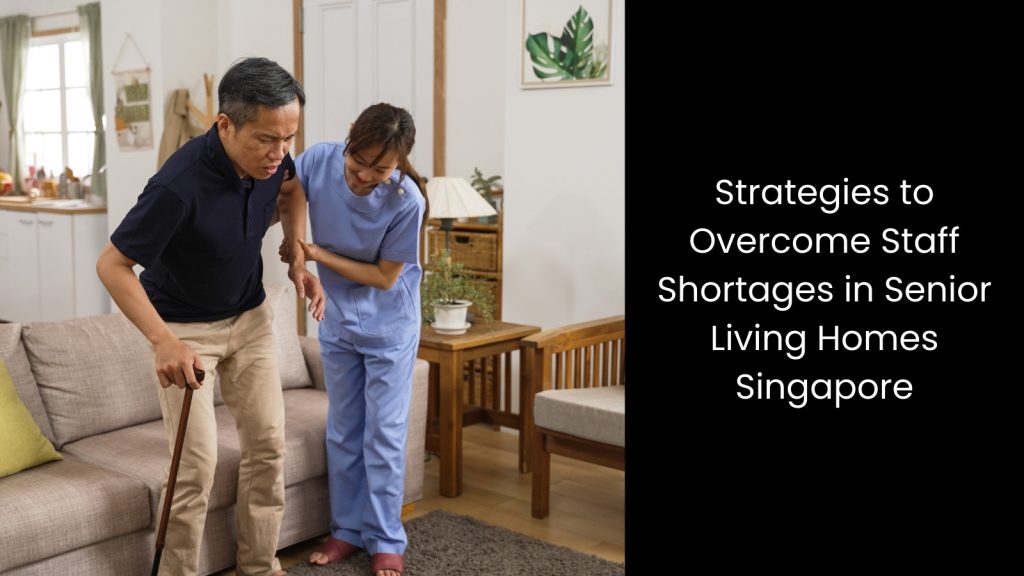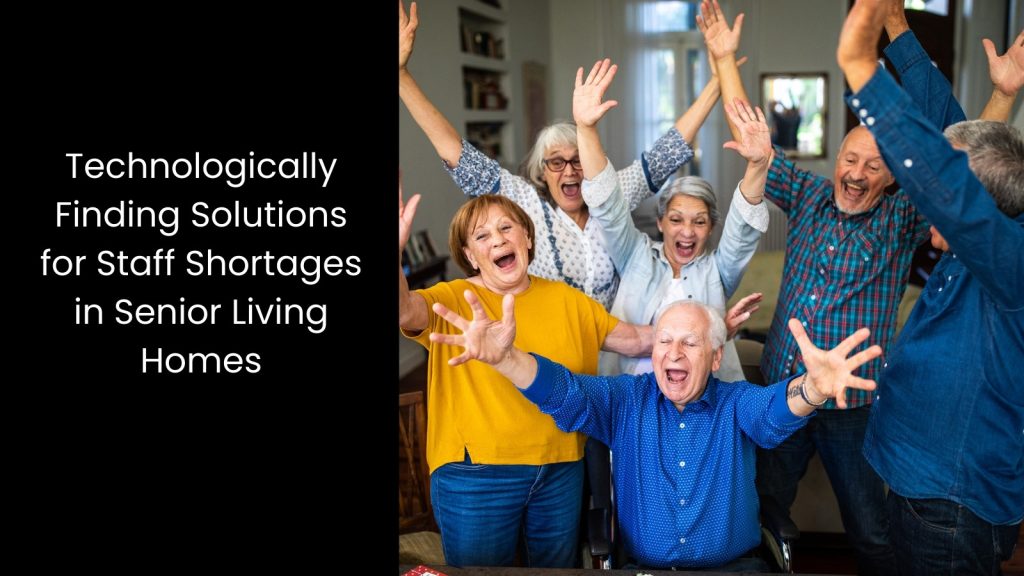Senior living homes in Singapore have become an essential part of many communities in recent years. However, it is facing an unprecedented challenge: a severe shortage of staff. This crisis has far-reaching implications, from compromised quality of care to operational difficulties. As the ageing population in Singapore continues to grow, the demand for senior living services is increasing, giving a huge weight to the shoulders of the existing staff and the management.
This article goes deeper into the root causes of the staff shortage and examines potential solutions to address this pressing issue in Singapore.
We will know
Why do Senior Living Homes Encounter Staff Shortages?

- Senior living homes in Singapore encounter staff shortages due to several interconnected factors, creating significant challenges for both management and government.
- One primary reason is the ageing population, which increases the demand for senior care services, putting pressure on existing staff to meet higher needs. This growing demand often exceeds the supply of qualified workers, leading to recruitment difficulties.
- Also, the nature of the work can be physically and emotionally demanding, deterring potential employees. Many people tend to seek careers that offer less stress and more favourable conditions, which is why it contributes to high turnover rates in this particular industry.
- The perception of low pay and limited career advancement opportunities in senior care also exacerbates this issue. As a result, senior living homes struggle to maintain adequate staffing levels, leading to increased workloads for existing employees. This not only affects employee morale but also the quality of care provided to residents. Also, it will result in potential neglect or insufficient attention to individual needs.
- Management faces the challenge of balancing operational costs while trying to improve wages and benefits to attract and retain staff. This situation creates a vicious cycle where staff shortages lead to burnout, further driving employees away. This is where the end result is so obvious. The government has to take care of the responsibility of the vulnerable seniors in the country more than they do now.
Strategies to Overcome Staff Shortages in Senior Living Homes Singapore

Offering Competitive Compensation Packages
This is indeed a wise strategy to overcome staff shortages in senior living homes in Singapore, as it directly addresses the fundamental needs and motivations of potential and current employees.
In an industry facing significant recruitment challenges, providing attractive salary packages is a top priority to entice individuals to choose a career in senior care. This can include not only competitive base salaries but also comprehensive benefits such as healthcare coverage, retirement plans, and paid time off.
Another thing is that introducing performance bonuses can further motivate staff, rewarding them for their hard work and dedication. It will create a culture of appreciation and recognition, which is crucial in a demanding work environment like senior living homes. Furthermore, offering additional leave, such as personal days or mental health days, acknowledges the emotional and physical toll that caregiving can take on employees.
Likewise, staff feel valued and adequately compensated. This way, senior living homes can improve job satisfaction and reduce turnover rates.
Enhancing Recruitment Efforts
One of the biggest issues in the senior care industry is recruiting suitable staff.
This will help the management to attract a broader and more qualified pool of candidates.
However, as the first step, developing targeted recruitment campaigns that highlight the benefits and fulfilment of working in senior living is crucial. These campaigns can showcase the meaningful impact that caregivers have on the lives of seniors, emphasising job satisfaction and the personal growth that comes from helping others. If they can effectively communicate these values, senior living homes can draw in individuals who may not have considered a career in this field.
One of the main initiatives to do this is to reach out to local universities and vocational schools. These institutions are often filled with students seeking practical experience and career opportunities. This approach aids in tapping into fresh talent eager to learn and grow within the industry.
Moreover, it is important to go beyond geolocation barriers in the recruitment process. Although this is not as easy as it seems to be, utilising online job platforms and social media can help reach potential candidates from various backgrounds and regions, expanding the talent pool significantly. This strategy acknowledges that skilled individuals may be looking for employment opportunities beyond their immediate surroundings, particularly if they are drawn to the rewarding nature of senior care.
Flexible Work Arrangements
If you can go with this strategy, it will certainly accommodate the diverse lifestyles and needs of potential employees, and your problem will also vanish.
If a senior living home management can offer flexible scheduling options, such as part-time roles or shift swapping, they can attract a broader range of applicants, including students, parents, or those with other commitments. This adaptability not only appeals to individuals who may be hesitant to commit to a traditional full-time position but also enhances job satisfaction for current employees, reducing turnover rates.
You know flexible work arrangements promote a healthy work-life balance, which is essential in a demanding field like senior care. When staff feel they can manage their personal lives alongside their professional responsibilities, they are more likely to remain engaged and dedicated to their roles.
Employee Referral Programmes
This means you can always use your existing workforce to attract new talent.
It is a good strategy to encourage current employees to refer potential candidates; senior living homes can tap into networks that may not be reached through traditional recruitment methods. If you can offer bonuses or other incentives for successful hires, then it will create a motivating environment where employees feel invested in the hiring process. This not only rewards employees for their efforts but also reinforces a sense of ownership and community within the workplace.
The main point is that referred candidates will have a better cultural fit and understanding of the organisation’s values, which can lead to higher retention rates compared to externally sourced hires. When staff actively participate in recruitment, it builds a positive workplace culture, as employees are more likely to feel valued and respected for their contributions.
Community Engagement
In this section, we highlight the importance of creating strong relationships between senior living homes and the local community. Let’s see how this is done.
If you can actively involve community members, senior living homes can attract volunteers who may later transition into paid roles. This approach not only builds a pipeline of potential employees but also taps into the local interest in senior care, encouraging individuals to consider careers in this fulfilling field.
When community members volunteer, they gain experience in the senior living environment. This allows them to understand the importance and impact of their contributions. This experience can spark interest in pursuing a career in senior care, as volunteers often develop connections with residents and see the difference they can make in their lives.
Moreover, community engagement enhances the visibility of senior living homes, helping to raise awareness about the vital services they provide. Hosting events, workshops, or open houses can showcase the benefits of working in senior care, appealing to individuals who may not have previously considered it as a career path.
A good impression is what attracts more people to your work.
Holding Hands with Robust Technology
Another outstanding approach we should take into consideration is implementing technological solutions. With this strategy in place, senior living homes can streamline staff workflows, making daily tasks more efficient and manageable.
For example, mobile apps can enable caregivers to access important resident information on the go, reducing the time spent on administrative duties and allowing more focus on direct care. This efficiency not only enhances job satisfaction but also helps to reduce employee burnout, which is a common issue in the demanding field of senior care.
Also, most importantly, management systems can facilitate better communication among staff members, ensuring that everyone is informed about residents’ needs and changes in care plans. As it minimises miscommunication, technology contributes to a more cohesive team environment and improves the overall quality of care provided to residents.
Furthermore, using technology to automate routine tasks, such as scheduling or inventory management, frees up valuable time for staff. This will allow them to spend more time engaging with residents and building meaningful relationships. This focus on personal interaction can make positions in senior living more appealing to potential candidates who seek a rewarding career in caregiving. Do you get the point here?
Technologically Finding Solutions for Staff Shortages in Senior Living Homes

If you are also a part of senior living home management in Singapore, you might be feeling overwhelmed by staff shortages, which are increasing day by day. If you could consider investing in innovative software like an Elder Care app, it will certainly take this headache away from you. Since it can streamline operations and enhance communication, as we mentioned above, these apps not only ease staff burdens but also improve the quality of care for residents. Embracing these technological advancements can lead to a more efficient and supportive environment for both employees and seniors if only you purchase a reliable solution from an industry expert.

